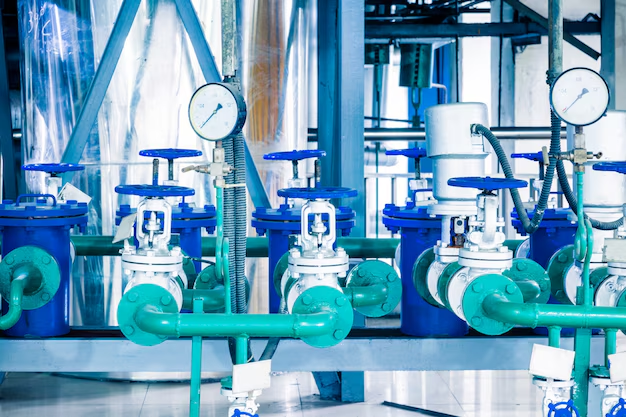In the realm of plumbing and fluid control systems, Friend DC pumps with transition unions have gained significant popularity due to their efficiency, versatility, and ease of installation. These pumps are essential in various applications, from water circulation in aquariums to solar water heating systems. In this article, we will explore what makes these pumps unique, how they work, and the benefits they offer.
What are Friend DC Pumps?
Friend DC pumps are high-efficiency pumps that operate on direct current (DC) power. These pumps are designed to move water or other fluids in various systems, utilizing less energy compared to their alternating current (AC) counterparts. The term “Friend” often refers to a popular brand or product line known for reliability and performance.
Understanding Transition Unions
A transition union is a coupling device used to connect different types or sizes of pipes to the pump. It allows for flexibility and ease when assembling or disassembling piping systems. Transition unions are typically used when there’s a need to connect PVC, copper, or steel pipes with differing diameters.
Key Components of Friend DC Pumps with Transition Union
- Pump Motor: The DC motor powers the pump, providing efficient water circulation.
- Impeller: This is the moving part of the pump responsible for pushing water through the system.
- Transition Union: Acts as a connector that simplifies installation and maintenance by allowing pipes of varying types and sizes to be connected without complex tools.
How Friend DC Pumps Work
The working principle of Friend DC pumps is straightforward. The DC motor drives the impeller, which rotates and creates centrifugal force. This force draws water into the pump and pushes it out through the discharge pipe. The transition union plays a crucial role by providing a leak-free, easy-to-assemble connection between the pump and piping system.
Applications of Friend DC Pumps with Transition Unions
- Aquariums: Friend DC pumps are commonly used in aquariums to circulate water, ensuring proper filtration and oxygenation for fish.
- Solar Water Heating: These pumps are integral to solar water heating systems, circulating hot water between solar panels and storage tanks.
- Hydroponics: In hydroponic systems, DC pumps ensure efficient water flow, vital for plant growth.
- RV and Marine Applications: DC pumps are often found in recreational vehicles (RVs) and boats to manage water circulation and drainage.
Advantages of Friend DC Pumps
- Energy Efficiency: Friend DC pumps consume less power than traditional AC pumps, making them ideal for off-grid applications like solar-powered systems.
- Quiet Operation: These pumps operate quietly, making them perfect for residential and indoor uses.
- Versatile Use: With the help of transition unions, these pumps can be installed in a wide range of applications, accommodating various pipe types and sizes.
- Easy Installation and Maintenance: The transition union makes assembling and disassembling the pump system quick and simple, reducing labor and maintenance costs.
Choosing the Right Transition Union for Your Pump
Choosing the correct transition union is essential for ensuring the pump’s efficiency and leak-free operation. Consider the following factors:
- Pipe Material Compatibility: Ensure the union is compatible with the materials of both pipes (e.g., PVC to copper or steel).
- Correct Size: Choose the right union size that matches your piping diameter to avoid leaks or reduced flow rates.
- Durability: Opt for high-quality materials that can withstand pressure, temperature changes, and potential corrosion.
Installation Tips for Friend DC Pumps with Transition Unions
- Positioning the Pump: Place the pump at the lowest point in your system to facilitate gravity-fed water flow.
- Use Proper Fittings: Ensure all pipes and fittings, especially the transition unions, are securely connected and properly sealed.
- Check Voltage Compatibility: Verify that the pump’s DC voltage matches your power source to avoid motor damage.
- Regular Maintenance: Periodically inspect the pump and transition union for wear and tear, and replace any damaged components to prolong the system’s life.
Common Issues and Troubleshooting
- Low Flow Rate: Check for clogs or blockages in the piping system or transition union.
- Leakage at the Union: Inspect the transition union for cracks or improper tightening and replace or reseal it if necessary.
- Pump Not Running: Ensure the power supply is connected correctly and that the DC voltage matches the pump’s requirements.
Maintenance and Longevity of Friend DC Pumps
Maintaining your Friend DC pump with transition union is essential for long-term performance. Here are a few maintenance tips:
- Regular Cleaning: Clean the pump’s impeller and housing regularly to prevent debris buildup.
- Inspect the Transition Union: Periodically check the union for any signs of wear or leakage.
- Monitor Power Usage: Keep an eye on the pump’s power consumption, as increased usage may indicate a clog or other issue.
Environmental Impact
Since Friend DC pumps are energy-efficient, they contribute to reducing carbon footprints, especially when used in solar-powered or off-grid applications. The ability to use transition unions with a variety of pipe types also promotes reuse and reduces waste.
Conclusion
Friend DC pumps with transition unions offer a flexible, energy-efficient, and easy-to-install solution for a wide range of fluid management applications. Whether you are working with an aquarium, solar water heater, or hydroponic system, these pumps provide reliable performance with minimal maintenance. With proper installation and regular upkeep, your pump system will offer years of service while saving energy and reducing environmental impact.
